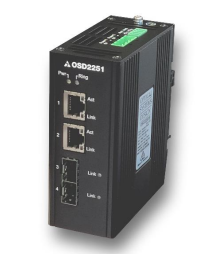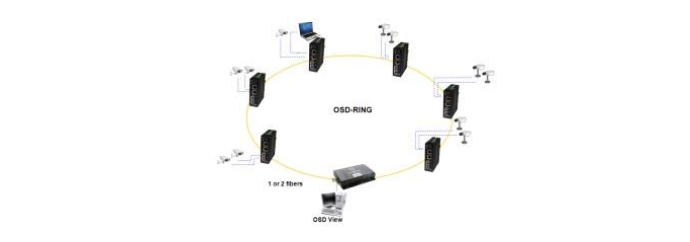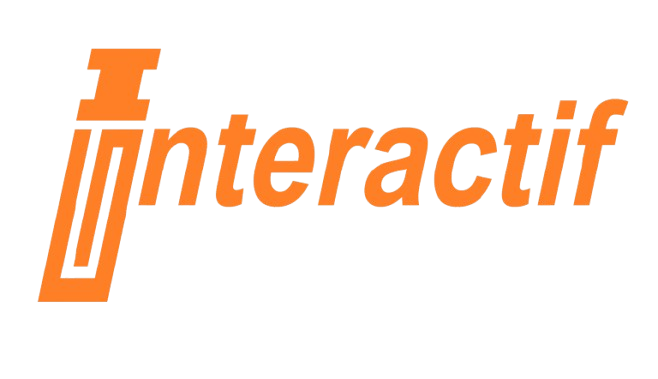NETWORK

JKINDUSTRIAL & DATA TRANSCEIVERS AND MULTIPLEXERS OSD138 UNIVERSAL DATA TRANSCEIVER
PRODUCT DESCRIPTION
- Complies with IEEE802.3i/802.3u/802.3ab
- 10/100/1000Base-T, IEEE802.3u 100Base-Fx,
- IEEE802.3z 1000Base-Lx/Sx standards
- Has a total of four ports: two fixed copper ports for
- 10/100/1000Base-T and two SFP ports for the fibre ring or non-ring (100Base-Fx or 1000Base-X)
- A network diameter of hundreds of kilometers is practical

OSD2251E Lite Managed 4-port Ethernet Switch with SNMP & VLAN 2 x 10/100/1000BASE-T & 2 x Gigabit SFP
FEATURES AND BENEFITS
- Complies with IEEE802.3i/802.3u/802.3ab
- 10/100/1000Base-T, IEEE802.3u 100Base-Fx,
- IEEE802.3z 1000Base-Lx/Sx standards
- Has a total of four ports: two fixed copper ports for
- 10/100/1000Base-T and two SFP ports for the fibre ring or non-ring (100Base-Fx or 1000Base-X)
- A network diameter of hundreds of kilometers is practical
- Ring reconfiguration in the case of cable or switch failures takes less than two milliseconds per hop
- MDI/MDIX Crossover: no need for crossover cables
- Can be used with either singlemode or multimode fiber over a variety of link budgets
- Available for operation over 1 or 2 fibers
- Supports 10KB jumbo frames
- Auto-Negotiation for half or full duplex operation
- Powered by non-critical 10 to 36VDC or 24VAC supplies with dual power supply inputs
- Integrates with third party NMS system via industry standard SNMP v1, v2c, v3
- Operates over the temperature range of -20 to +75oC
- Supports VLAN and IGMP snooping
- Compatible with the OSD2244 and OSD225* series Gigabit Ethernet switches
- SFP modules sold separately
- DIN rail or wall mounting
- Available for operation in ring or point-to-point configuration
INTRODUCTION
- The OSD2251E is a 4-port lite managed switch with two Gigabit RJ45 and two Gigabit SFP uplink ports which can be used as standard ports or as a redundant fiber ring using OSD’s proprietary ring protocol. Along with higher level features including SNMP, VLAN and IGMP snooping the OSD2251E is suitable for use in critical networks. A rugged IP30 casing, fan-less design and wide operating temperature range from -40 to +75oC make it suitable for use in a wide range of harsh industrial environments.
TYPICAL APPLICATION DESIGN

specifications
Hardware
- Ethernet
- 2 x 10/100/1000Base-T RJ45, IEEE802.3i/802.3u/802.3ab
- Jumbo Frame Support
- 10KB
- SFP Port
- 2 x Gigabit SFP ports (100Mbps or 1000Mbps user selectable)
- Optical Data Interface
- IEEE802.3z 1000Base-Lx/Sx, 100Base-Fx
- Enclosure Protection Class M
- IP30
- Installation
- DIN rail, wall mount or desktop
- Alarm (ring version only)
- Ring to Bus, High Temperature
- Alarm Interface
- Opto isolated MOSFET rated at 100mA @ 46V maximum
- Alarm Connector
- 4 way 3.5mm terminal block
- DIP Switch
- 8 way DIP switch for configuration
- Power Requirements
- +10V to +36V DC or 22 to 28VAC @ 8VA
- Power Connector
- 4 way 5.08mm terminal block
- Indicators
- 2 x Copper Link on each RJ45
- 2 x Copper Activity on each RJ45
- 2 x SFP Speed/Activity/Link on each SFP
- 1 x Initialise/Ring/Bus
- 1 x Power
- Environmental
- -20 to +75oC
- Relative Humidity
- 0 to 95% non-condensing
- Dimensions
- 43W x 91D x 110H mm
- Warranty Period
- 480g
MANAGEMENT
- Interfaces
- Command Line Interface (CLI mini USB)
- Web browser based Graphical User Interface (GUI) (Chrome or Edge)
- SNMP v1, v2c, v3
- Port Configuration
- Port enable/disable, Auto negotiation
- Flow control enable/disable
- Port Status
- Speed, duplex mode, link status, auto negotiation status
- VLAN
- 802.1Q VLAN
- Multicast Protocol
- RFC 2236 IGMP snooping v1, v2, v3
- Ethernet Redundancy
- OSD-Ring
- SNMP MIBs
- RFC 1213 MIB
- Private MIB Framework
- Contact OSD for full list of available MIB’s
WARRANTY
- Warranty Period
- 5 years
- MTBF (Ground Benign Environment,
- 30oC)
- 724,000 hours
Request a Quote
Learn More From
Frequently Asked Questions
Multimode fiber commonly comes in 50/125 μm or 62.5/125 μm core/cladding dimensions, with bandwidth capacities ranging from 200 MHz to 2 GHz, depending on the grade. Multimode systems typically support transmission distances of up to 5 km, making them suitable for short- to medium-range applications.
In contrast, singlemode fiber—usually 9–10/125 μm—offers significantly lower attenuation and effectively unlimited bandwidth, supporting links over 150 to 200 km, especially when paired with optical amplifiers and advanced transceivers.
While singlemode fiber is less expensive per meter, its associated transceivers and equipment tend to cost more than their multimode counterparts. That said, singlemode devices are generally compatible with both singlemode and multimode fiber, whereas multimode equipment works only with multimode fiber.
Let me know if you’d like this turned into a quick-reference table or visual comparison—it’d make a solid inclusion for a fiber deployment guide.
The link budget is the difference between the transmitter’s output power and the receiver’s sensitivity. This budget must account for all signal losses along the path, including:
- Fiber attenuation due to the transmission medium
- Connector losses, such as those at patch panels or equipment interfaces
- Splice losses from mechanical or fusion joints
- Link margin, which provides a buffer for unforeseen variations
The link margin typically ranges from 2–3 dB in tightly controlled environments to up to 10 dB in more variable conditions. It is designed to accommodate:
- Component aging (e.g., light sources may degrade and lose up to 3 dB over time)
- Temperature variations affecting transmitter output or receiver sensitivity (up to 3 dB may be needed for thermal fluctuations)
- Physical cable damage and repair-induced losses (usually minor, but more relevant in harsh or industrial settings)
Always design your system for worst-case scenarios to ensure reliability. However, don’t overlook the best-case condition either—some optical receivers may exhibit erratic behavior if the incoming signal is too strong.
First, verify the optical signal strength along the link. Use an optical power meter to measure the received power at the fiber’s end point. Typical transmit levels range from –8 dBm to –15 dBm, while the receiver sensitivity is around –31 dBm, giving you a link budget of approximately 16 dB. This margin supports transmission distances of up to 10 km on singlemode fiber and about 3–5 km on multimode fiber.
If the measured power falls below the receiver sensitivity, there’s a strong likelihood of issues with the installed fiber. Ideally, initial OTDR readings should have flagged such faults.
If not, inspect the patch cords currently in use for possible defects or misalignment. A frequent oversight is the use of mismatched patch cords.
Multimode fiber types are classified by the ISO/IEC 11801 standard into five main categories: OM1, OM2, OM3, OM4, and OM5. Each type differs in core size, bandwidth, supported data rates, and maximum transmission distances. Here’s a quick breakdown:

- OM3 and OM4 are laser-optimized and widely used in modern data centers.
- OM5 supports shortwave wavelength division multiplexing (SWDM), enabling multiple wavelengths over a single fiber for higher capacity.
- All OM types are backward compatible in terms of connectors, but mixing core sizes (e.g., OM1 with OM3) can cause performance issues.
